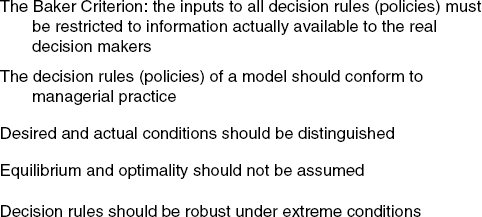7.2. Formulation Guidelines for Portraying Feedback Structure
It is sometimes said of our increasingly complex world that everything is connected to everything else, suggesting a huge tangle of interdependencies for people to manage and for the modeller to unravel. This is an overstatement. While it is true that more parts of business and society are connected now than in the past (think of mobile phones and the internet), the most important and useful connections are nevertheless sparse. Why? Anything that happens in organisations depends on the actions of ordinary people, who, no matter how talented, can handle only limited amounts of information as they communicate, collaborate and cajole to achieve their objectives. The complexity of society largely mirrors our own human capacity to process information and to coordinate action - and that capacity has not changed fundamentally since the industrial revolution or the Roman empire. Therefore, the task for the feedback system modeller is to portray, as convincingly as possible, the relatively sparse network of connections through which people enact plans and strategies. The majority of the network is made up of information flows.
Figure 7.5. Formulation guidelines

Source: Sterman, J.D., Business Dynamics: Systems Thinking and Modeling for a Complex World, © 2000, Irwin McGraw-Hill, Boston, MA. Reproduced with permission of the ...
Get Strategic Modelling and Business Dynamics: A Feedback Systems Approach now with the O’Reilly learning platform.
O’Reilly members experience books, live events, courses curated by job role, and more from O’Reilly and nearly 200 top publishers.

